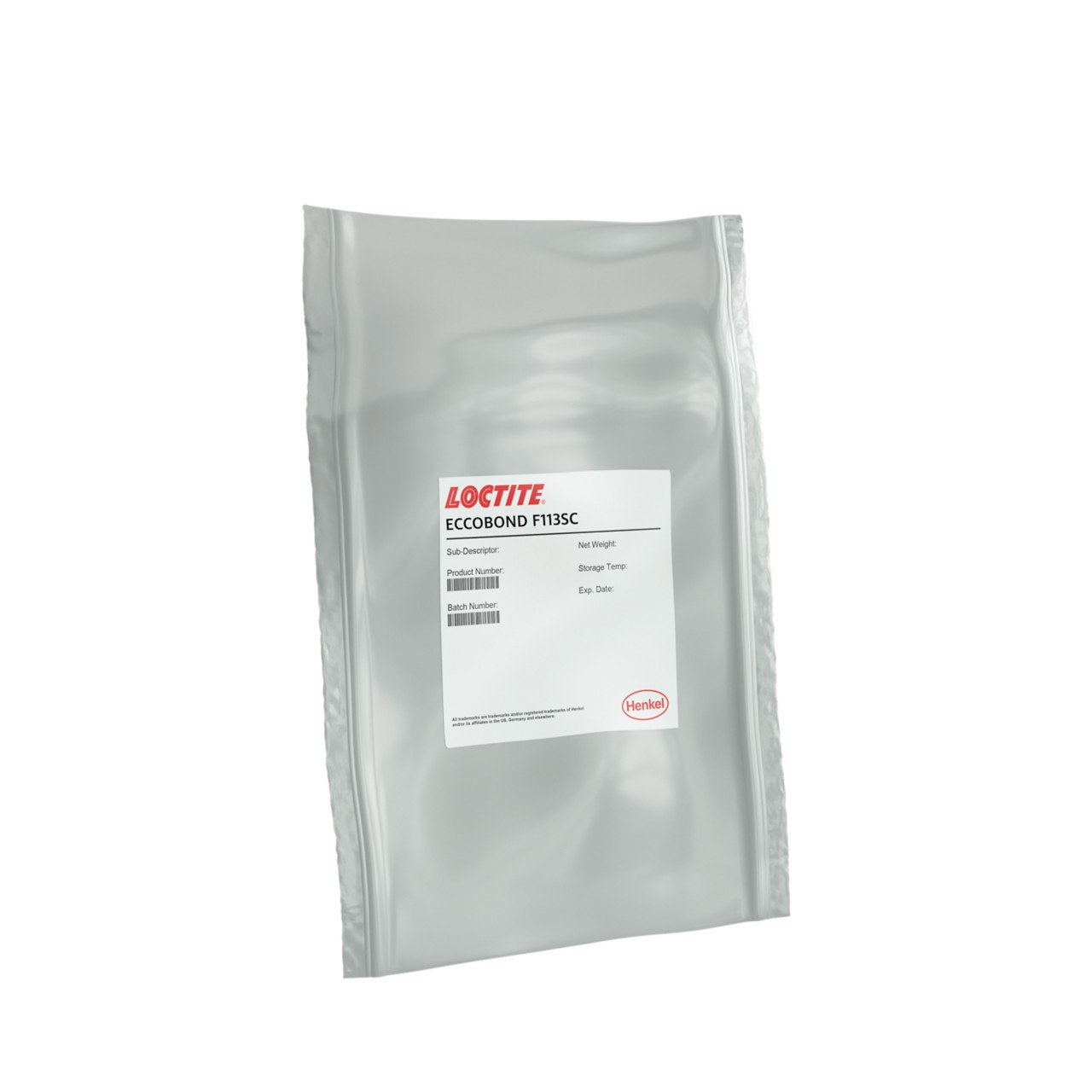LOCTITE ECCOBOND F113SC
Harmonization Code : 3907.30.00.90 | Polyacetals, other polyethers and epoxide resins, in primary forms; polycarbonates, alkyd resins, polyallyl esters and other polyesters, in primary forms : Epoxide resins : Other
Main features
- Two component
- High Tg
- Fiber optic assembly
Product Description
LOCTITE ECCOBOND F113SC is a two-component epoxy that is formulated for terminating all types of fiber optic connectors. This high Tg and low viscosity product is used to create low stress connections with no pistoning. Its dark blue color (after mixing) allows for easy polishing
LOCTITE ECCOBOND F113SC can operate in temperatures between -60 to 120°C and is typically used for Fiber optic connectors, LED displays, Lenses and Optoelectronic device assembly.
Cure Schedule
- 18 hours @ 25°C or
- 1 hour @ 65°C or
- 15 minutes @ 90°C (for one drop applications)
Technical Specifications
| General Properties | |
| Pot Life Pot Life Pot life is the amount of time it takes for the viscosity of a material to double (or quadruple for lower viscosity materials) in room temperature after a material is mixed. It is closely related to work life but it is not application dependent, less precise and more of a general indication of how fast a system is going to cure. | 0.5 hours |
| Refractive index Refractive index The refractive index determines how much the path of light is bent, or refracted, when entering a material. It is calculated by taking into account the velocity of light in vacuum compared to the velocity of light in the material. The refractive index calculation can be affected by the wavelength of light and the temperature of the material. Even though it is usually reported on standard wavelengths it is advised to check the TDS for the precise test parameters. | 1.52 |
| Specific Gravity Specific Gravity Specific gravity (SG) is the ratio of the density of a substance to the density of a reference substance; equivalently, it is the ratio of the mass of a substance to the mass of a reference substance for the same given volume. For liquids, the reference substance is almost always water (1), while for gases, it is air (1.18) at room temperature. Specific gravity is unitless. | 1.1 |
| Thermal Properties | |
| Glass Transition Temperature (Tg) Glass Transition Temperature (Tg) The glass transition temperature for organic adhesives is a temperature region where the polymers change from glassy and brittle to soft and rubbery. Increasing the temperature further continues the softening process as the viscosity drops too. Temperatures between the glass transition temperature and below the decomposition point of the adhesive are the best region for bonding. The glass-transition temperature Tg of a material characterizes the range of temperatures over which this glass transition occurs. | 95 °C |
| Chemical Properties | |
| Water Absorption | 0.98 % |
| Physical Properties | |
| Viscosity Viscosity Viscosity is a measurement of a fluid’s resistance to flow. Viscosity is commonly measured in centiPoise (cP). One cP is defined as the viscosity of water and all other viscosities are derived from this base. MPa is another common unit with a 1:1 conversion to cP. A product like honey would have a much higher viscosity -around 10,000 cPs- compared to water. As a result, honey would flow much slower out of a tipped glass than water would. The viscosity of a material can be decreased with an increase in temperature in order to better suit an application | 1800 mPa.s |
Additional Information
How to use
- Carefully clean and dry all surfaces to be bonded
- Remove clamp and thoroughly mix the LOCTITE ECCOBOND F113SC epoxy adhesive system components in the handy BIPAX mixing-dispenser package until color is uniform throughout
- Apply this completely mixed adhesive to the prepared surfaces, and gently press these surfaces together. Contact pressure is adequate for strong, reliable bonds; however, maintain contact until adhesive is completely cured
- Some separation of components is common during shipping and storage. For this reason, it is recommended that the contents of the shipping container be thoroughly mixed prior to use
- Some ingredients in this formulation provided in BIPAX, TRA-PAX and bulk packaging may crystallize when subjected to low temperature storage. A gentle warming cycle of 52ºC for 30 minutes prior to mixing components may be necessary. Crystallized epoxy components do not react as well as liquid components and should be redissolved prior to use for best results



